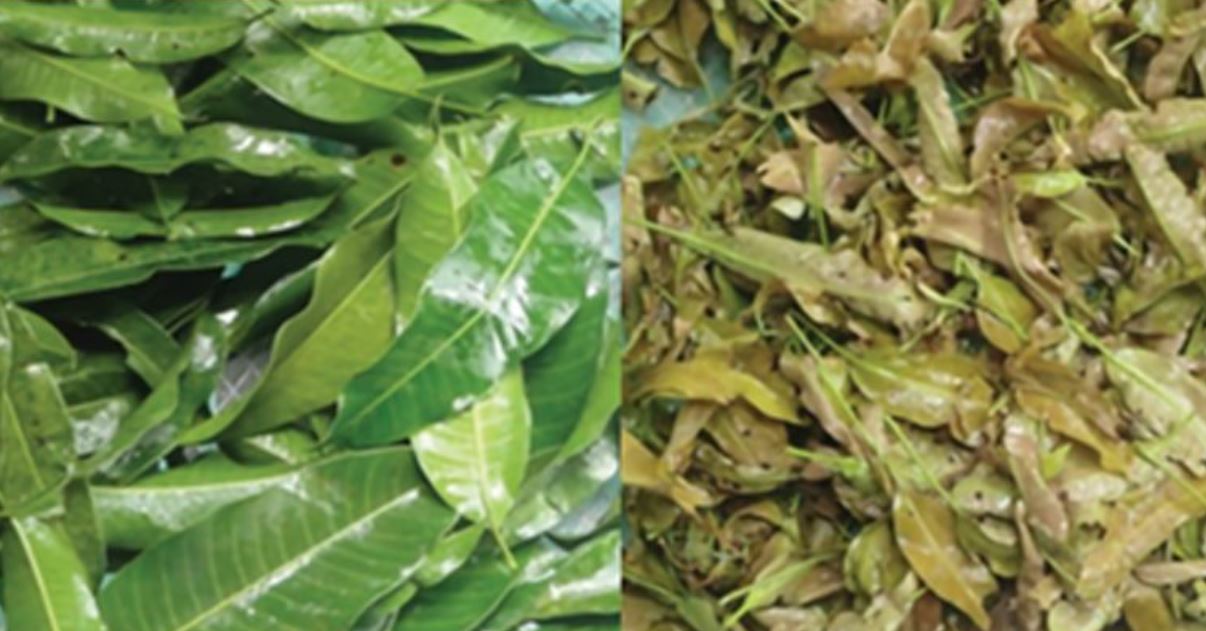
Philippine mango leaves’ extracts have shown great potential as cosmetics ingredients with good antioxidant, anti-aging, and whitening properties, based on a study conducted by the National Institute of Molecular Biology and Biotechnology of the University of the Philippines Los Baños.
The UPLB research on the “Evaluation of the Bioactivities of Natural Phenolics from Mango (Mangifera indica Linn) Leaves for Cosmetic Industry Applications,” investigated samples of fresh leaves of mango cultivars (carabao, apple mango, pico, sinaging, and sipsipin) collected from San Miguel, Bulacan to explore its possible cosmetic applications.
While mango has been one of the top three produced and exported crops in the country, most studies centered on the industry profitability, mainly on breeding, fruit production, and processing.
“Unlike in other countries, very few in the Philippines have explored the potential and utilization of the non-fruit parts of the mango, such as the bark and leaves,” UPLB research team leader Arsenia B. Sapin said in the Department of Science and Technology- Science and Technology Information Institute report released May 7, 2021.
Sapin’s team looked for the presence of polyphenolic compounds in the local mango leaves, along with the antioxidant capacity and inhibitory effect against elastase and tyrosinase – enzymes which cause aging and darkening of the skin.
Previous studies on foreign mango cultivars reveal that mango leaves are an excellent source of polyphenolic compounds, which provide health benefits such as antioxidation, antidiabetic, anticancer, and anti-inflammatory properties, among others.
Abroad, mango leaves have proven their application in food, pharmaceuticals, and cosmetics. In fact, there has been an approved patent, such as that of Loreal’s, on the extraction and application of polyphenols from mango leaves.
In terms of skin whitening, extracts from young leaves of pico and carabao varieties were most potent in inhibiting tyrosinase, the skin darkening enzyme. On the other hand, among the extracts from the mature leaves, the apple mango exhibited the greatest potency. While these extracts are a better whitening agent than ascorbic acid, such is not the case with kojic acid.
In terms of anti-aging, extract from apple mango leaves was the most potent elastase (enzyme for aging) inhibitor, which was about two times to four times more potent than the other extracts. Compared with the standard tocopherol (Vitamin E compound commonly found in nuts, oil, and vegetables), the mango leaf extracts were probably 10 times more effective.
“The results of this study could provide consumers with effective nature-based ingredients for safer cosmetic products, and for healthier and beautiful skin, as an alternative to the synthetic ones available in the market,” Sapin said.
The complete discussion and results of this study can be downloaded for free from the Philippine Journal of Science (PJS) Vol. 150 No. 2, April 2021 issue. PJS is the Philippines’ oldest peer-reviewed scientific journal, published by the Department of Science and Technology- Science and Technology Information Institute (DOST-STII).
Philippines’ tropical fruit wine barrels made from santol and mango are cheaper alternatives to oak barrels.
CHECK OUT THIS LIST of 9 Philippine Fruits With Disease-Fighting Antioxidants Tested by UP.
SEND CHEERS in the comments below to UPLB and DOST for the study on Philippine mango leaves found with anti-aging and whitening properties.
Good News Pilipinas is celebrating its 15th Anniversary in 2021 by giving away prizes! Subscribe to our Good News Pilipinas! TV YouTube channel and enter the raffle by sending us an email to editor@goodnewspilipinas.com
The post Philippine mango leaves found with anti-aging, whitening properties – UPLB study appeared first on Good News Pilipinas.

0 Comments